
Click here to go to printable recipe: Pickled Cueritos (with vegan option)
The Spanish word cuero means leather, any kind of animal hide, and cuerito is its diminutive form. In Mexican cuisine, cueritos are fresh pieces of pork skin, which have been separated from the meat and fat, and may be either fried with other parts of the pork (carnitas), or alternatively, boiled and pickled in vinegar, often mixed with pickled jalapeños and carrots (escabeche.)
Although chicharrón is also made with pork skin, the rinds for this dish undergo a process of curing with salt, pre-frying, and drying, before finally fast-frying in lard to obtain a crispy texture; cueritos, on the other hand, are made with fresh rinds, and the end texture is always somewhat chewy.
The hardest part of preparing pickled cueritos in Canada, is finding fresh pork skin sold by itself, but it might be commonly purchased attached to certain cuts of meat, which gives leeway to obtain some, while using the meat for another recipe. Some examples are hocks (photo below, left) and shoulder picnic roast (photo below, right):
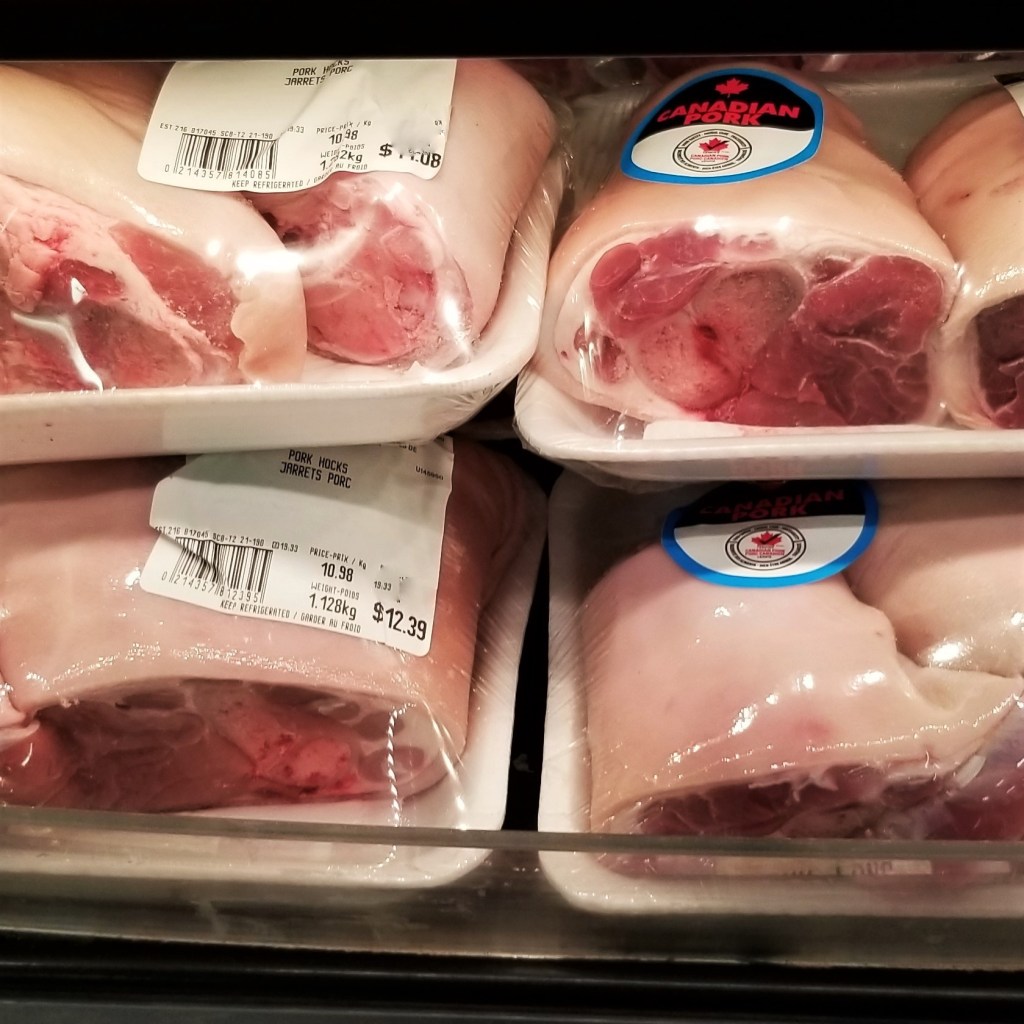

For this recipe, I bought one of those picnic roasts, and also found a couple of pieces of pork belly that came with skin, as seen below:
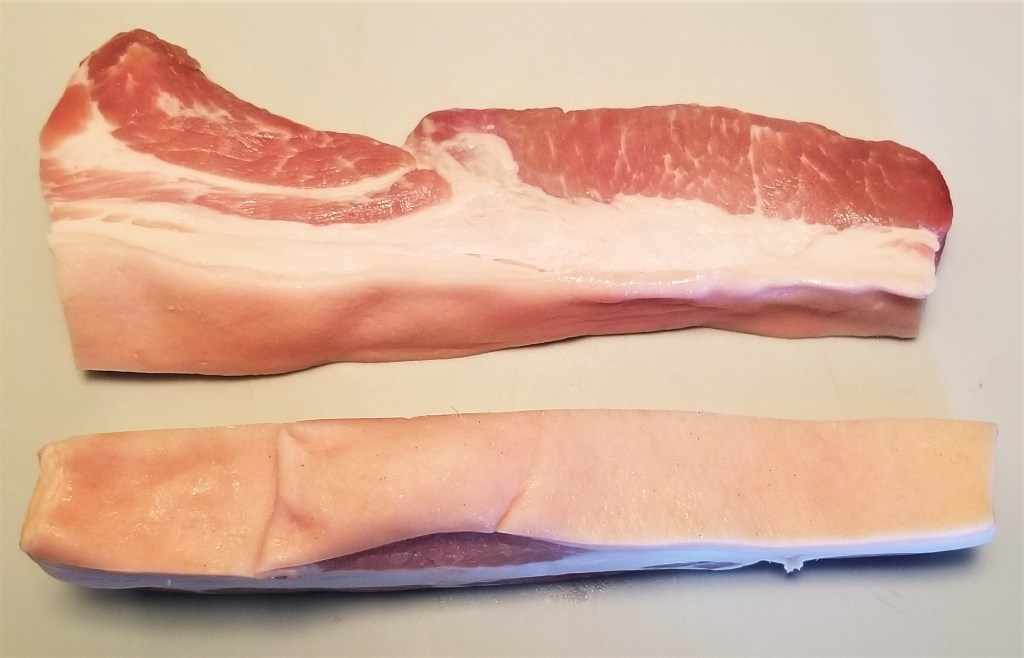
To extract the skin: Place the meat on a cutting board, with the skin on one side; insert a very sharp knife between the skin and the fat layers, starting at either end, and separate by slowly cutting through the fat, parallel, and as close as possible, to the skin, and gently pulling the skin away assisted with one hand, continuing along to detach the whole strip of skin:

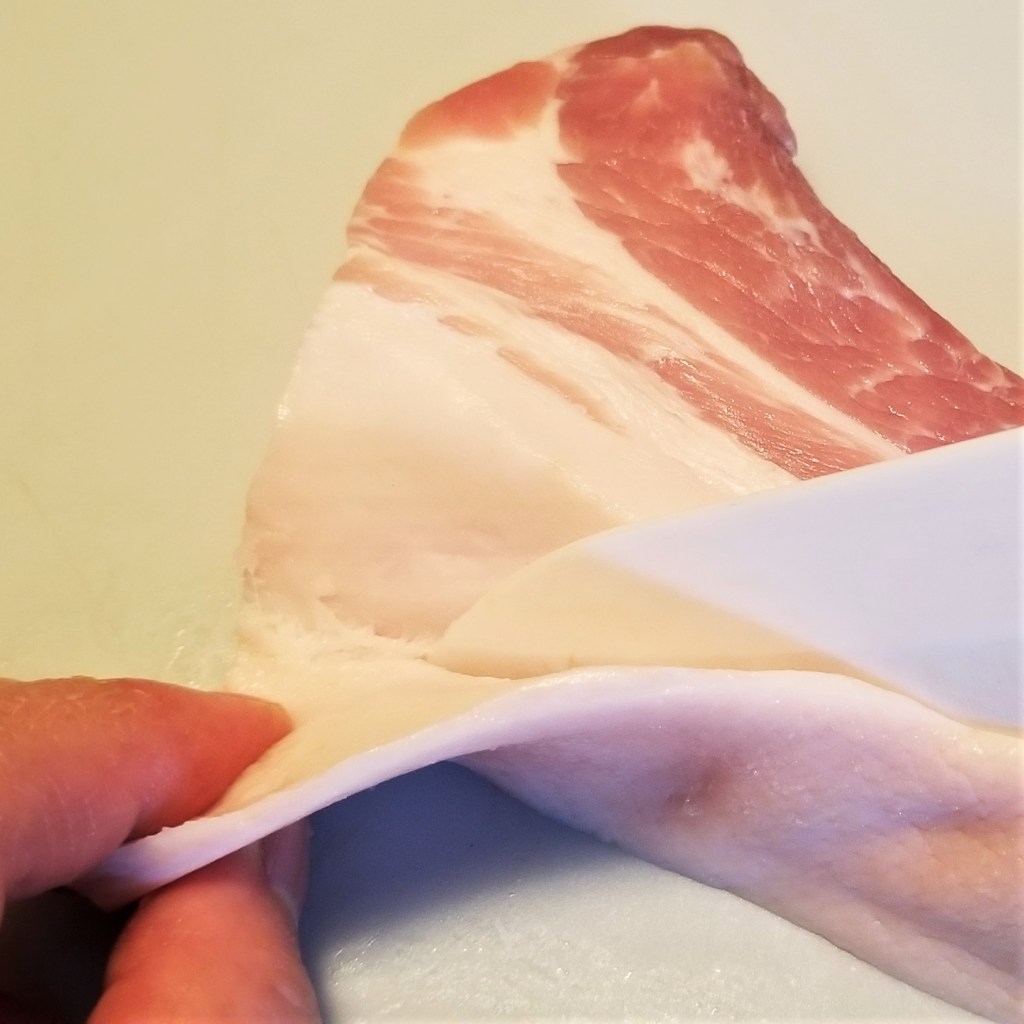
(Use the roast and pork belly for another recipe, for example, my Pan-fried Carnitas, or try Sinaloa Style Chilorio.)
Pickled Pork Rinds – Cueritos en Escabeche
(with Vegan Option!)
Printable recipe: Pickled Cueritos with vegan option
Ingredients (about six portions)
½ lb (225 g) fresh pork skin
¼ cup vinegar
1 bay leaf
½ tsp whole black peppercorns
1 tsp salt, or to taste
1 cup pickled jalapeño peppers with carrots (click here for my recipe, or from can)
Water, as needed
Place pork skin pieces in a pot with water, over high heat (photo below, left), and bring to a rolling boil (photo below, right):


Lower heat to medium, and cook skin, covered, for thirty to forty minutes, until fully cooked and tender, but not breaking. Drain water, remove rinds from pot, and rinse in cold water. Working with one piece at a time, place on a cutting board with the outer side facing up; using the tip of a knife, remove any bristles that might be still attached, placing the knife under the individual hair, then scraping against the growth direction (photo below, left). Once all the bristles have been removed, flip the piece, and holding one end with a hand or fork, shave fat still attached, sliding a knife on the surface of the rind, moving towards the other end (photo below, right); discard fat, then slice cleaned rind into smaller pieces, either rectangles, or strips:
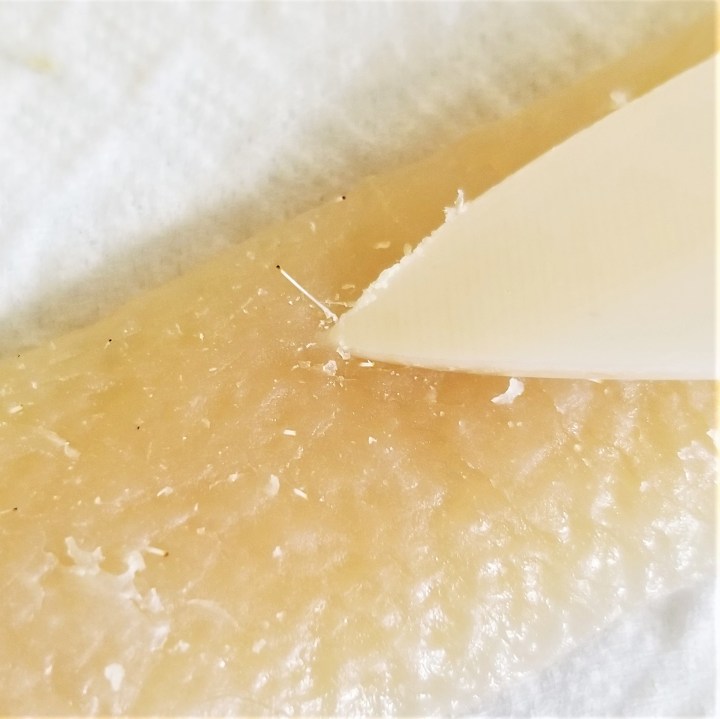

Return rind pieces to the empty pan; add two cups of water, bay leaf, salt and pour in vinegar (photo below, left). Turn on heat to high, and bring to a boil (photo below, right):
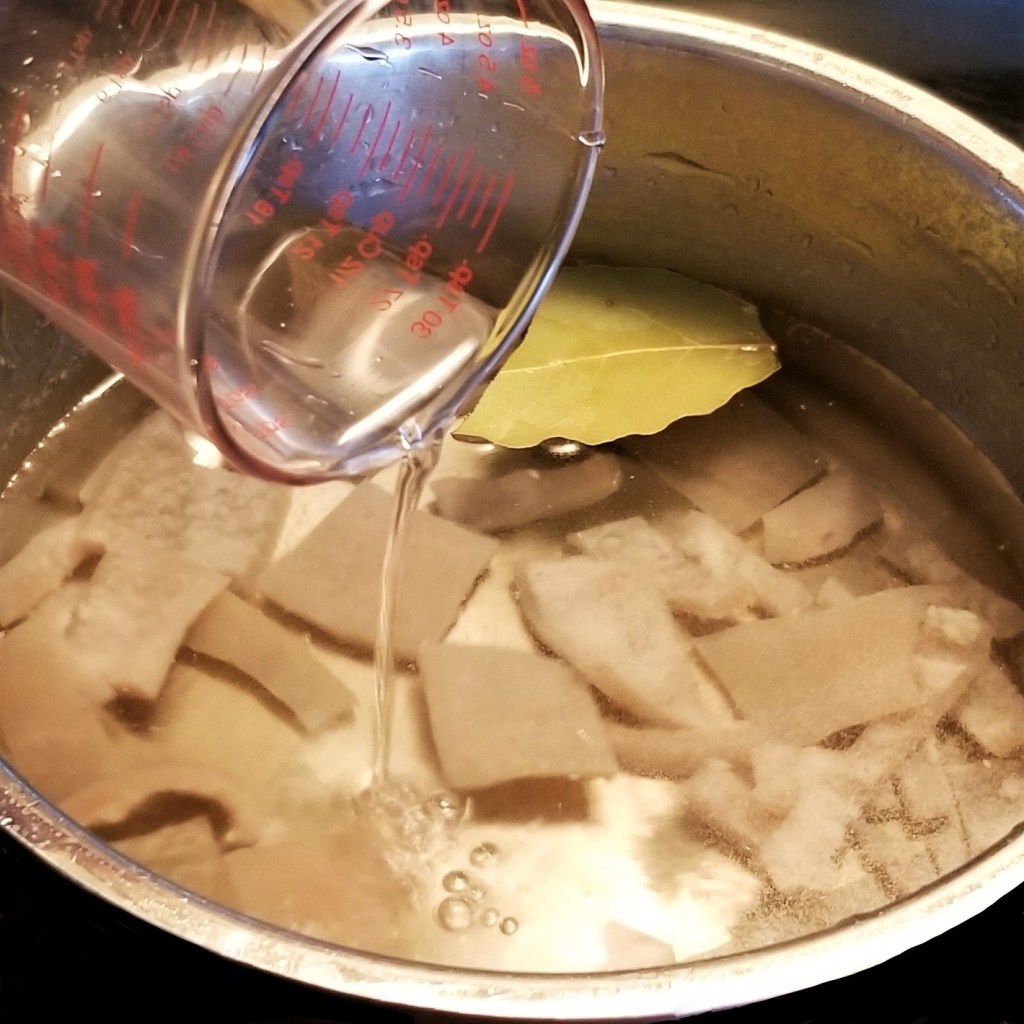

Cook for five minutes, then remove from heat. Transfer rinds and bay leaf to a heatproof jar with lid, add black peppercorns and pour cooking liquid on top:
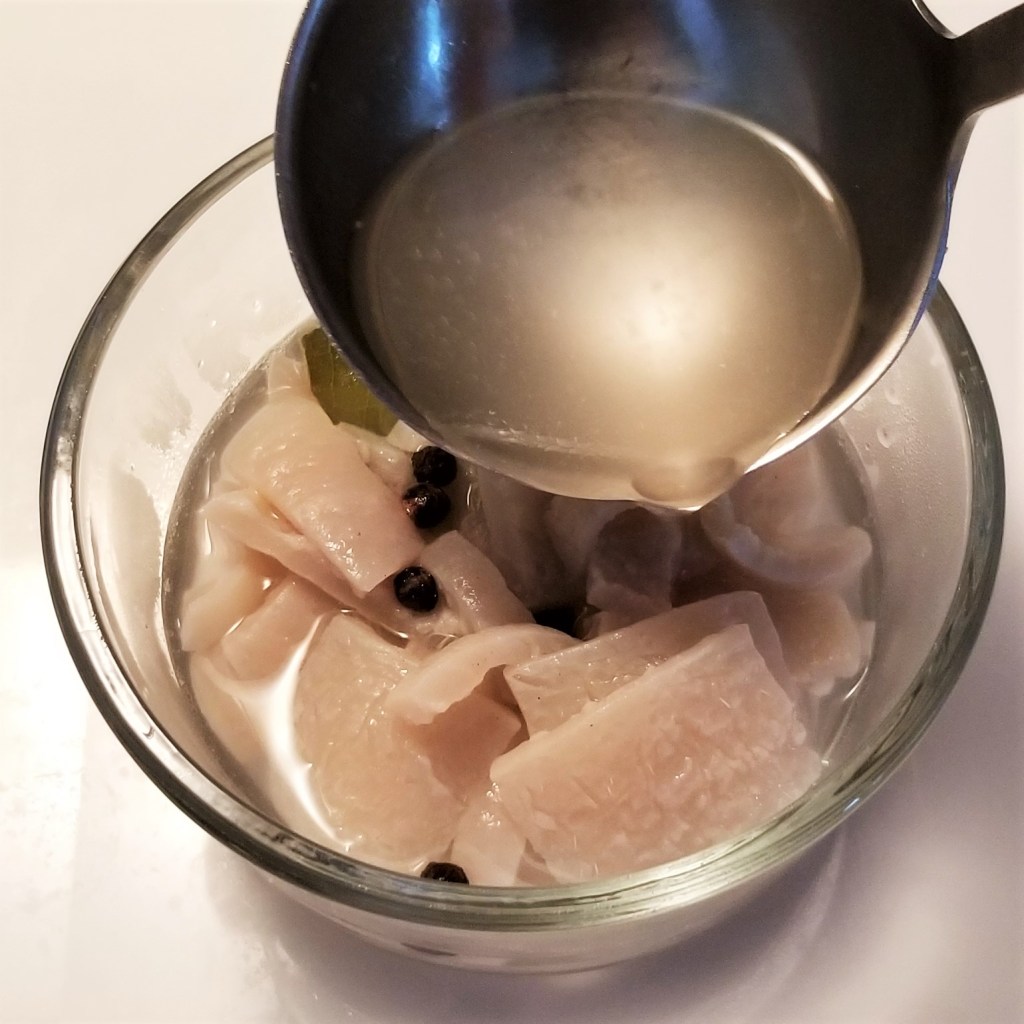
Cover with lid. Once cooled, it may be stored in the fridge up to a couple of months. To serve, mix with pickled jalapeños and carrots, adding a little of the vinegary liquid as well, and offer as a snack or appetizer:

VEGAN OPTION! Cuerito-less Pickled Snack: It might seem impossible to conceive this dish without pork rind, but the flavour of cooked fresh pork rinds is mild, and its texture, chewy, so it was not very hard to think of a vegan foodstuff with similar characteristics. Konjac (Amorphophallus konjac) is a plant originally from China, cultivated there and other parts of Asia for its edible tubers, which are made into naturally white flour or jelly. In Japan, the jelly is sometimes flavoured and coloured with seaweed, and then formed into blocks (konnaku), or prepared in the shape of white noodles (shirataki) in soups and stews. Konjac flour has the capacity to absorb great amounts of water, so noodles could be up to 97% water, hence having almost no caloric content; this has attracted attention amongst dietitians and food scientists (see, for example this 2021 article from the International Conference on Green Agro-Industry and Bioeconomy.) In addition, in recent years, shirataki noodles have become popular globally, mainly for their low calorie content, but also for being gluten free. At a local store, I found these tube-shaped shirataki, with an addition of oat fibre:

To prepare the noodles, first drain into a colander (photo below, left). Konjac has a characteristic smell, but it is easily removed by rinsing in cold water (photo below, right):


Drain again into the colander, and they are ready to be seasoned, stir-fried or coated with sauce (photo below, left). The shape, size and, most importantly, the texture, were perfect to simulate cooked pieces of cuerito. For four portions of cuerito-less pickled snack, mix 400g of rinsed and drained noodles with one cup of pickled jalapeños and carrots, including several spoons of vinegary liquid (photo below, right):
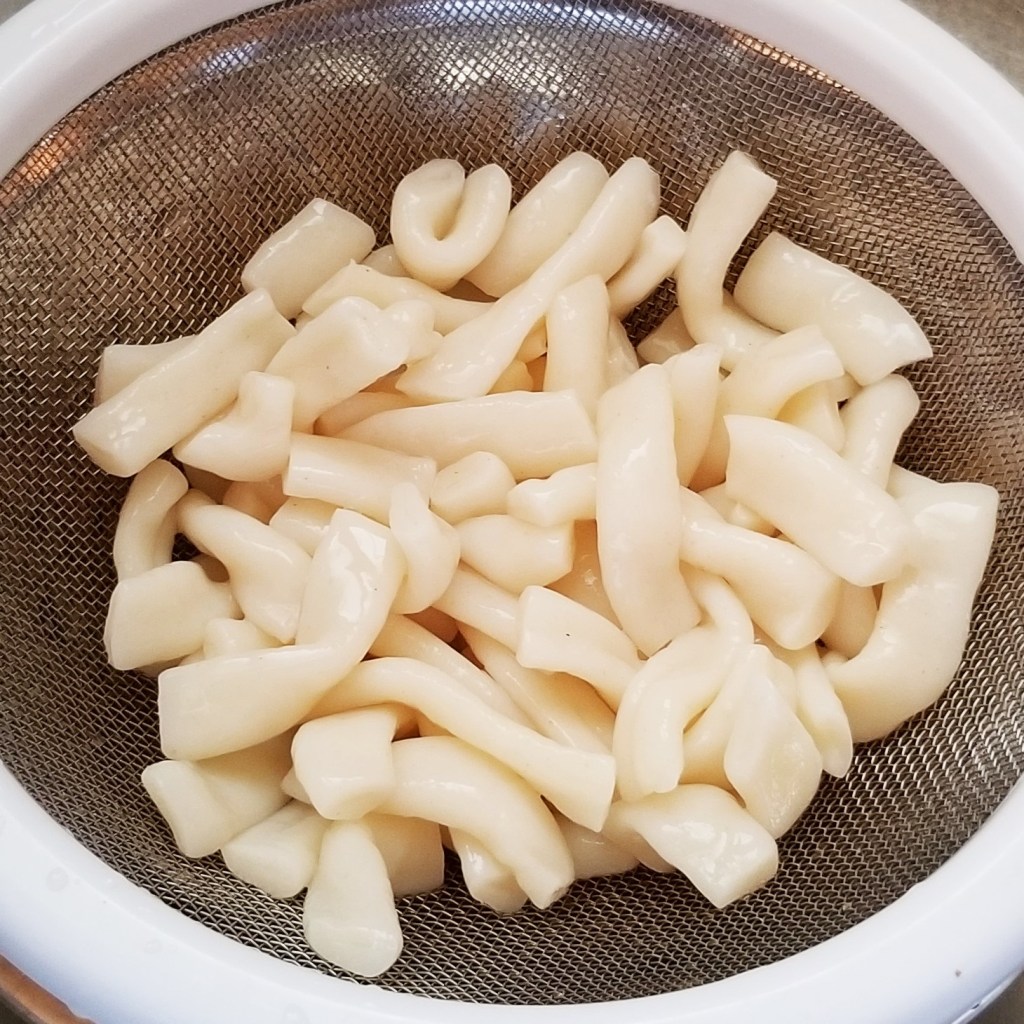

Serve just like regular pickled cueritos:
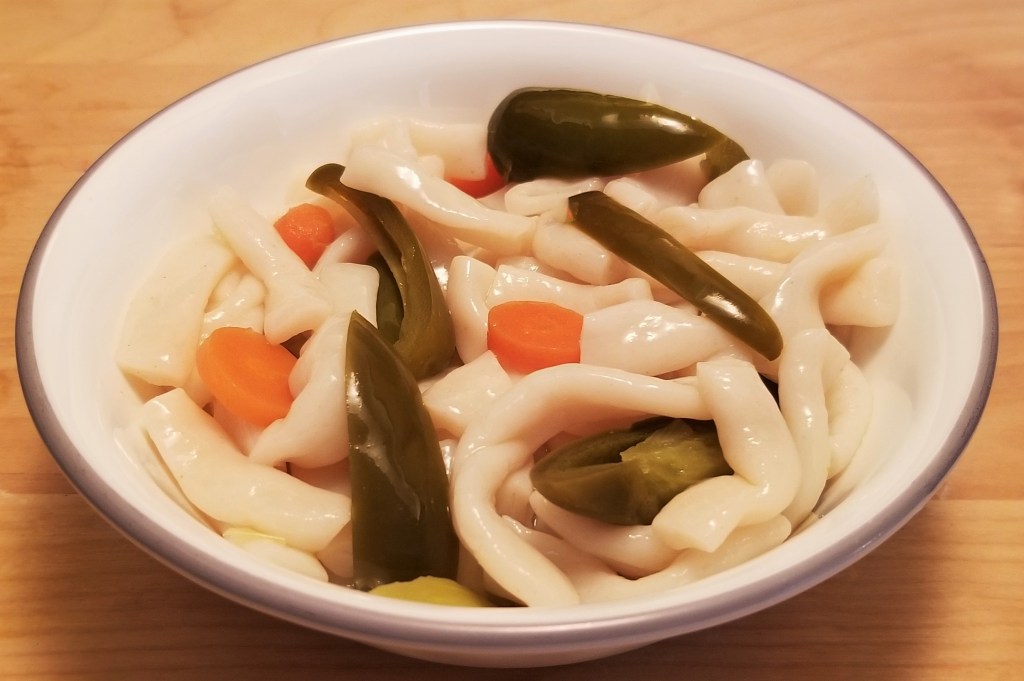
The texture is a perfect match, and the escabeche flavour from the pickled veggies and liquid completes the effect. The only disadvantage of shirataki noodles is that, once the package is opened, any leftovers should be refrigerated and eaten within a couple of days. This particular brand came in two pockets, which may be stored at room temperature for months, so it is very convenient to have at hand, and open only as needed, to avoid waste.
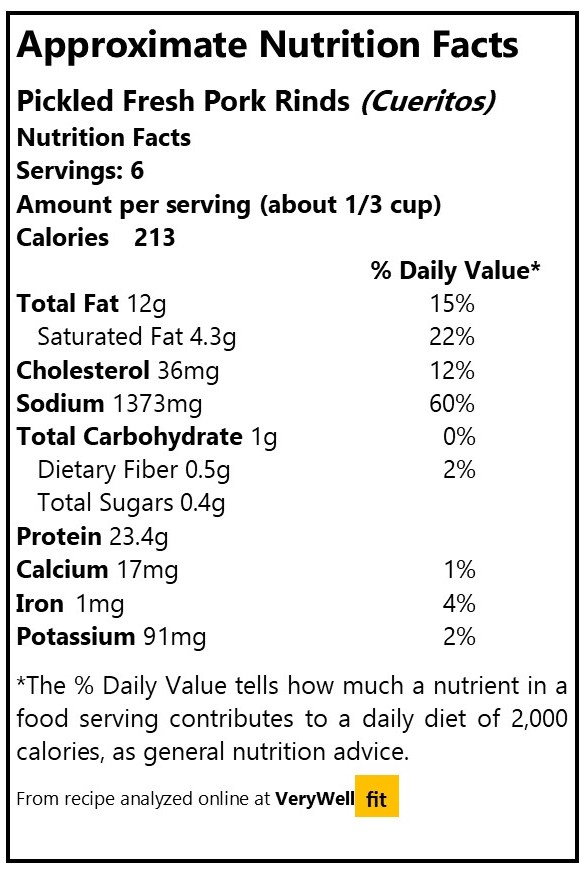

For your convenience, click on the images below for products available on Amazon™. DISCLAIMER: Any reviews included in this post are my own, for items I have purchased, not provided by any company; as an Amazon Associates Program affiliate, I might receive a commission for any purchases originated from the links below, at no extra cost to you (thank you so much to readers who have bought any other products starting with a click from my links!):
I am sharing my post at Thursday Favourite Things #512, with Bev @ Eclectic Red Barn, Pam @ An Artful Mom, Katherine @ Katherine’s Corner, Amber @ Follow the Yellow Brick Home, Theresa @ Shoestring Elegance and Linda @ Crafts a la Mode.
I am bringing my recipe to Full Plate Thursday #559 with Miz Helen @ Miz Helen’s Country Cottage.
I am joining Fiesta Friday #403 with Angie @ Fiesta Friday.
I am also sharing my recipe at What’s for Dinner? Sunday Link-Up #338 with Helen @ The Lazy Gastronome.










When I saw the picture I thought ‘Nice fruit salad’ lol it was anything but. A very interesting dish in faxt. I must say those Penne pasta noodles look very different to what I use.
LikeLike
Yeah, not your everyday ingredients for sure, lol!
LikeLiked by 1 person
That’s good though. Without unusual ingredients cooking can get boring in a hurry. Like this it’s always an adventure.
LikeLiked by 1 person
I have not hear of that plant or the noodles made from it. Makes me curious to try it. Afraid I’ve never been a fan of pickled snacks, though.
LikeLike
The noodles are very versatile, very tasty in soups and stews. If you like chewy texture, like squid, you would like konjac.
LikeLiked by 2 people
I love these – especially on a crispy tostada shell. Thanks for sharing at the What’s for Dinner party! Hope to see you again tomorrow! Happy Halloween!
LikeLiked by 2 people
Thank you for hosting, Helen, have a Happy Halloween, too!
LikeLiked by 1 person